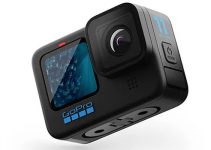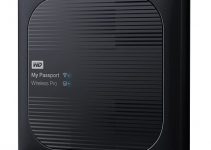Operating a drone/UAV above water could be a nerve-racking experience for many drone owners, but when executed the right way, such a flight can help you to capture some stunning aerial landscape shots with ease. Many inexperienced aerial videographers, however, might be afraid to fly their expensive quadcopter above water, but the truth is it’s not much different routine than flying a drone over land.
In other words, there is nothing that you should be afraid of as far as you follow a few simple safety rules. Tom David Frey of Tom’s Tech Time shares some of the most important precautions you should take into consideration when flying a drone above water to keep it safe (and dry) from take-off to landing.
First and foremost, make sure that you disable the Vision Positioning System. Otherwise, your quadcopter can easily get disoriented when flying low to a moving surface such as water. You can access this setting by navigating to the MC Settings>Advanced settings on your Phantom 3 app.
Another recommendation is to stay away from obstacles that could interfere with your drone’s compass or signal. Objects like lighthouses, boat transceivers, antennas, electronic devices and everything in between should be avoided no matter what. If you fly too close to the water, take at least a few minutes to check the height of the waves hitting the shore. Typically, wide-angle lenses tend to make objects look further away than they actually are, so be extremely careful in that regard.
Furthermore, don’t fly your drone near birds, unless you want your flying property to be followed, or worse, even attacked by a seagull or any other sibling. Even though this type of accidents could happen relatively rare, the odds are you might be involved in such sooner rather than later, so don’t underestimate those occasions.
In case you want to make your flight even safer, utilise the Course Lock function on your long distance flights. This small feature helps your Phantom 3 or Phantom 4 stay oriented at all times. It’s easy to use and opens up a wide range of new creative possibilities.
And, of course, don’t underestimate the wind! Return early on the land and keep in mind that when your UAV has to travel against the wind, the battery will run low way faster. Make sure you’re using your battery more conservative than other situations when flying with your drone over land. On occasions where you want to take off from a moving platform such as a boat, you should pay particular attention as the drone will look as it flies backward if the platform moves forward.
Last but not least, if you crush your quadcopter accidently in water, you might be able to save your gear by swapping some parts. Or, at least you’ll be able to get your microSD card with the captured footage. Additionally, use a sticker that shows your phone or email in case your drone ends up in the hands of a trustworthy person. There are good chances you’ll be able to get it back that way.
Ultimately, always remember that the worst thing that might happen on an over water flight is an unexpected loss of your gear, whereas an accident when flying over land could damage other properties and result in much bigger costs. So, stay calm, act professionally and remember that if you’re are a safe pilot when flying over land, you’ll probably be a safe pilot when flying over water as well. Good luck and fly safely!
[source: Tom’s Tech Time]
B&H Order Links:
DJI Phantom 3 Professional Quadcopter with 4K Camera and 3-Axis Gimbal
DJI Inspire 1 v2.0 Quadcopter with 4K Camera and 3-Axis Gimbal
Amazon Order Links:
DJI Phantom 3 Professional Quadcopter with 4K Camera and 3-Axis Gimbal
DJI Inspire 1 v2.0 Quadcopter with 4K Camera and 3-Axis Gimbal
Disclaimer: As an Amazon Associate partner and participant in B&H and Adorama Affiliate programmes, we earn a small comission from each purchase made through the affiliate links listed above at no additional cost to you.



